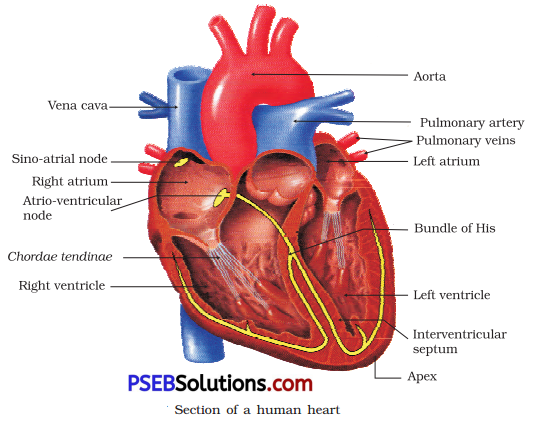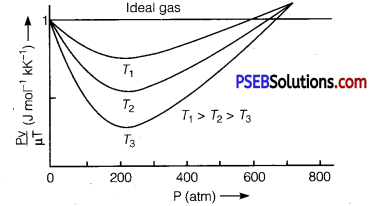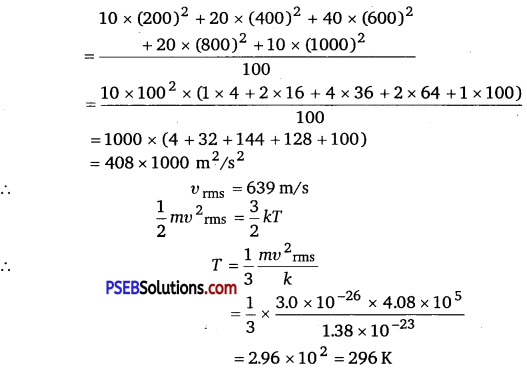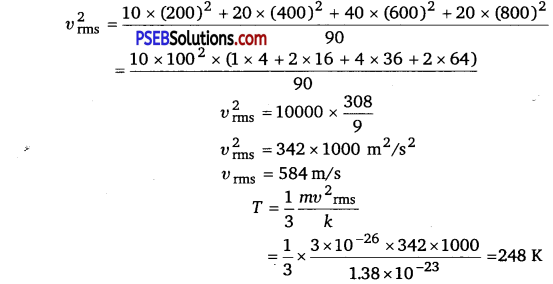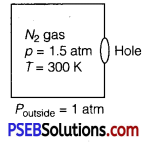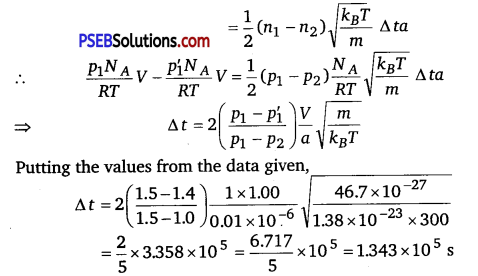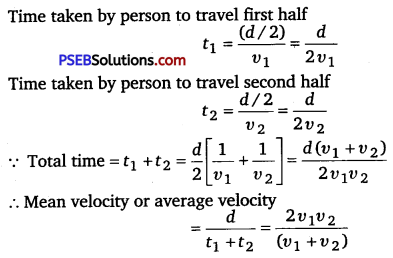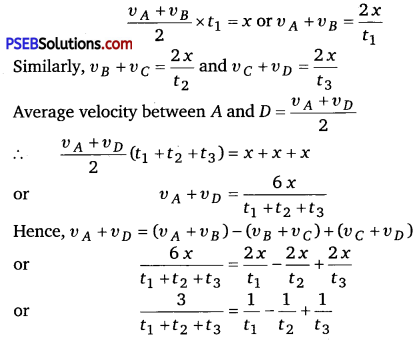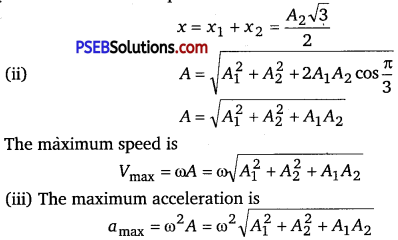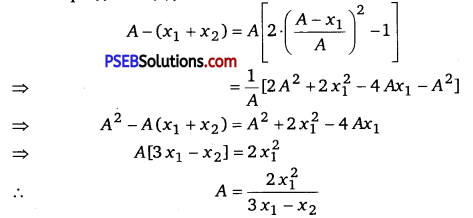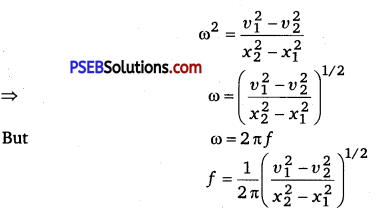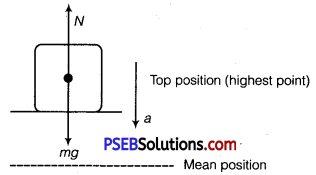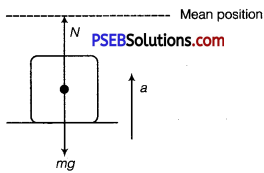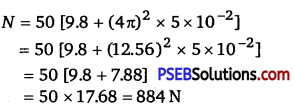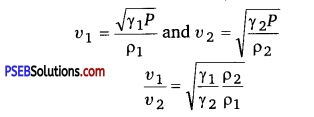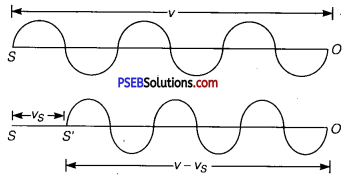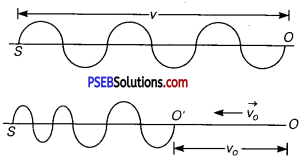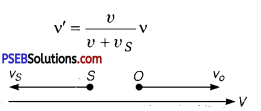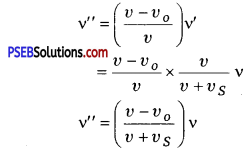Punjab State Board PSEB 11th Class Biology Important Questions Chapter 18 Body Fluids and Circulation Important Questions and Answers.
PSEB 11th Class Biology Important Questions Chapter 18 Body Fluids and Circulation
Very short answer type questions
Question 1.
Mention the total amount of normal leucocyte count in human.
Answer:
6000-8000 per cubic mm is the normal leucocyte count in human.
Question 2.
A person has a blood group AB positive. What does it mean?
Answer:
AB positive means that a person has both A and B antigens and also has Rh factor in his blood.
Question 3.
Comment. Blood is called river of life.
Answer:
It is called so, because blood plasma helps in transportation of materials like nutrients, gases, wastes, hormones, etc., within the body, which is very essential for the survival of life.
Question 4.
Why is blood group identification not needed for serum identification?
Answer:
Because serum does not have the coagulation/clotting factor.
Question 5.
Due to developmental abnormality, the wall of the left ventricle of an infant’s heart is as thin as that of right ventricle. What would be its specific effect in circulation of blood It may not be able to develop sufficient pressure to pump blood in all distant parts.
![]()
Question 6.
Why are veins provided with valves along their length?
Answer:
Valves are presept to prevent the backward flow of blood.
Question 7.
Where does the cardiac impulse originates?
Answer:
The cardiac impulse originates in cardiac muscle fibres and is not brought to the heart by any nerve fibres. The origin of cardiac impulse is said to be myogenic.
Question 8.
Given below are the abnormal conditions related to blood circulation. Name the disorders.
Acute chest pain due to failure of O2 supply to heart muscles. Increased systolic pressure. [NCERT Exemplar]
Answer:
(a) Angina,
(b) High blood pressure.
Question 9.
Heart failure is called congestive heart failure. Why?
Answer:
The congestion of lungs is a symptom of heart failure. Thus, it is also called congestive heart failure.
Question 10.
Indicate the blood vessel that transports hormones from the hypothalamus to the anterior pituitary.
Answer:
Hypophyseal portal vein.
Question 11.
From where does the hepatic portal system brings the blood?
Answer:
Hepatic portal system brings blood from the alimentary canal, pancreas and spleen to the liver.
![]()
Question 12.
Write a short note on-coagulation of blood.
Answer:
Coagulation of Blood:
When an injury occurs, there is bleeding from the wound for some time, but soon the blood stops flowing out.
This is because blood exhibits a mechanism called blood coagulation or clotting, to prevent excess loss of blood from the body.
A clot or coagulum is formed which consists of a network of fibres called fibrin in which the dead and damaged corpuscles are trapped. The blood clot seals the injured blood vessel and thereby bleeding stops.
Short answer type questions
Question 1.
What is Rh incompatibility of mother and foetus? What are the complications and necessary precautions involved in this case?
Answer:
Rh Incompatibility of Foetus and Mother: A special case of Rh incompatibility (mismatching) has been observed between the Rh -ve blood of a pregnant mother with Rh +ve blood of the foetus. Rh antigens of the foetus do not get exposed to the Rh -ve blood of the mother in the first pregnancy as the two bloods are well separated by the placenta. However/during the delivery of the first child, there is a possibility of exposure of the maternal blood to small amounts of the Rh +ve blood from the foetus.
In such cases, the mother starts preparing antibodies against Rh in her blood. In case of her subsequent pregnancies, the Rh antibodies from the mother (Rh -ve) can leak into the blood of the foetus (Rh +ve) and destroy the foetal RBCs. This could be fatal to the foetus or could cause severe anaemia and jaundice to the baby. This condition is called erythroblastosis foetalis. This can be avoided by administering anti-Rh antibodies to the mother immediately after the delivery of the first child.
Question 2.
How is cardiac activity regulated by the nervous system?
Answer:
Normal activities of the heart are regulated intrinsically, i.e., auto regulated by specialised muscles (nodal tissue), hence the heart is called myogenic. A special neural centre in the medulla oblongata can moderate the cardiac function through autonomic nervous system (ANS).
Neural signals through the sympathetic nerves (part of ANS) can increase the rate of heartbeat, the strength of ventricular contraction and thereby the cardiac output. On the other hand, parasympathetic neural signals (another component of ANS) decrease the rate of heartbeat, Speed of conduction of action potential and thereby the cardiac output. Adrenal medullary hormones can also increase the cardiac output.
![]()
Question 3.
Describe systemic circulation.
Answer:
The oxygenated blood entering the aorta is carried by a network of arteries, arterioles and capillaries to the tissues from where the deoxygenated blood is collected by a system of venules, veins and vena cava and emptied into the right atrium. This is the systemic circulation. The systemic circulation provides nutrients, O2 and other essential substances to the tissues and takes CO2 and other harmful substances away for elimination.
Question 4.
What is stroke volume? What is its relation with cardiac output?
Answer:
During one cardiac cycle or one heartbeat, the volume of blood pumped by the heart is called stroke volume. This is normally 70 mL. In one minute the heart beats about 72 times and the amount of blood pumped per minute is called cardiac output. This is usually 4900 mL ~ 5 litres.
Question 5.
Write a short note on-disorders of circulatory system.
Answer:
Disorders of Circulatory System
(i) Hypertension
It is commonly known as high blood pressure, to indicate a blood pressure that is higher than the normal, i.e., 120/80 mm Hg.
A sustained high blood pressure of 140/90 mm Hg or higher, is called hypertension.
It leads to heart diseases and affects the functioning of vital organs like kidneys and brain.
(ii) Coronary artery disease (CAD)
It is a disorder which affects the blood vessels (coronary arteries) that supply blood to the heart muscles.
Atherosclerosis is a form of CAD, which is caused by the deposition of cholesterol on the wall lining of the lumen of blood vessels.
It makes the lumen narrow and reduces the blood flow to the heart.
When the cholesterol deposits on the wall of blood vessels become calcified and hardened, the condition is called arteriosclerosis; such blood vessels lose their elasticity and become stiff, apart from having narrow lumen.
(iii) Angina pectoris
It is commonly called angina and occurs due to any condition that affects the blood flow to the heart muscle.
Due to this, enough of oxygen is not supplied to the heart muscle and a symptom of acute chest pain appears.
It can occur in men and women of any age.
(iv) Heart failure
It is the condition or state of the heart when it cannot pump sufficient blood to meet the needs of the body.
More often the cause for this condition is congestion of lungs; hence it is called congestive heart failure.
Heart failure is different from cardiac arrest, where the heart stops beating and heart attack, where the heart muscle is damaged suddenly due to insufficient blood supply.
Long answer type questions
Question 1.
Explain different types of blood groups and donor compatibility making a table. [NCERT Exemplar]
Answer:
Two groupings, i.e., the ABO and Rh are widely used all over the world. ABO grouping is based on the presence or absence of two surface antigens (chemicals that can induce immune response) on the RBCs, i.e., A and B. Similarly, the plasma of different individuals contain two natural antibodies (proteins produced in response to antigens).
Blood Groups and Donor Compatibility:
| Blood Group | Antigen on RBCs | Antibody in Plasma | Donor’s Group |
| A | A | Anti-B | A, 0 |
| B | B | Anti-A | B, 0 |
| AB | A, B | Nil | AB, A, B, 0 |
| 0 | Nil | Anti-A, B | 0 |
From the above-mentioned table it is evident that group ‘O’ blood can be donated to persons with any other blood group and hence ‘O’ group individuals are called ‘universal donors’. Persons with ‘AB’ group can accept blood from persons with AB as well as the other groups of blood. Therefore, such persons are called ‘universal recipients’.
Question 2.
Describe briefly the internal structure of human heart with neat and labelled diagram.
Answer:
Draw a diagram to show the internal structure of human heart. Internal Structure: Internally, the chambers of heart, i.e., two auricles (atria) and ventricles are separated by different septa and valves.
(a) Auricles (Atria): These are the upper two thin-walled and smaller chambers. These serve to receive the blood, therefore are called receiving chambers (right atrium and left atrium). Both the right and the left atria are separated by a thin, muscular wall known as interatrial septum. Right Atrium: This right chamber deals with only impure (deoxygenated) blood. It receives impure blood from various parts of the body, through two major veins, i.e., superior and inferior vena cava. It also receives blood from the walls of the heart itself (through a coronary sinus).
(b) Left Atrium: This chamber is meant to deal with only pure (oxygenated) blood. It receives blood (pure) from lungs through two pulmonary veins (i.e., one from the each lung).
Ventricles: These are lower two chambers of the heart, that pumps the blood away from the heart. Thus, function as pumping chambers. Both the right and the left ventricles are separated by the interventricular septum. The atrium and the ventricle of the same side are also separated by another septum, a thick fibrous tissue called atri oventricular septum (i.e., AV septum).
![]()
(a) Right Ventricle: It receives impure blood from right atrium and pumps to pulmonary artery, which further takes this blood to lungs for purification.
(b) Left Ventricle: It receives pure (oxygenated) blood from left atrium and pumps its pure blood to aorta (largest artery in the pathway), which in turn takes this blood to whole body and organs.
Cardiac Valves: Apart from septum, heart is also separated by the various valves. These valves act as a door-like structure in the heart that serves to maintain the unidirectional flow of blood.
Different valves present in the heart are given below :
- Tricuspid Valve: It is formed by three muscular flaps or cusps to guard the opening between the right atrium and the right ventricle.
- Bicuspid Valve: (Mitral valve) It is the type of valve that guards the opening between the left atrium and the left ventricle.
- Semilunar Valve: The opening of the right and the left ventricles into the pulmonary artery and the aorta respectively are provided with the semilunar valves.
